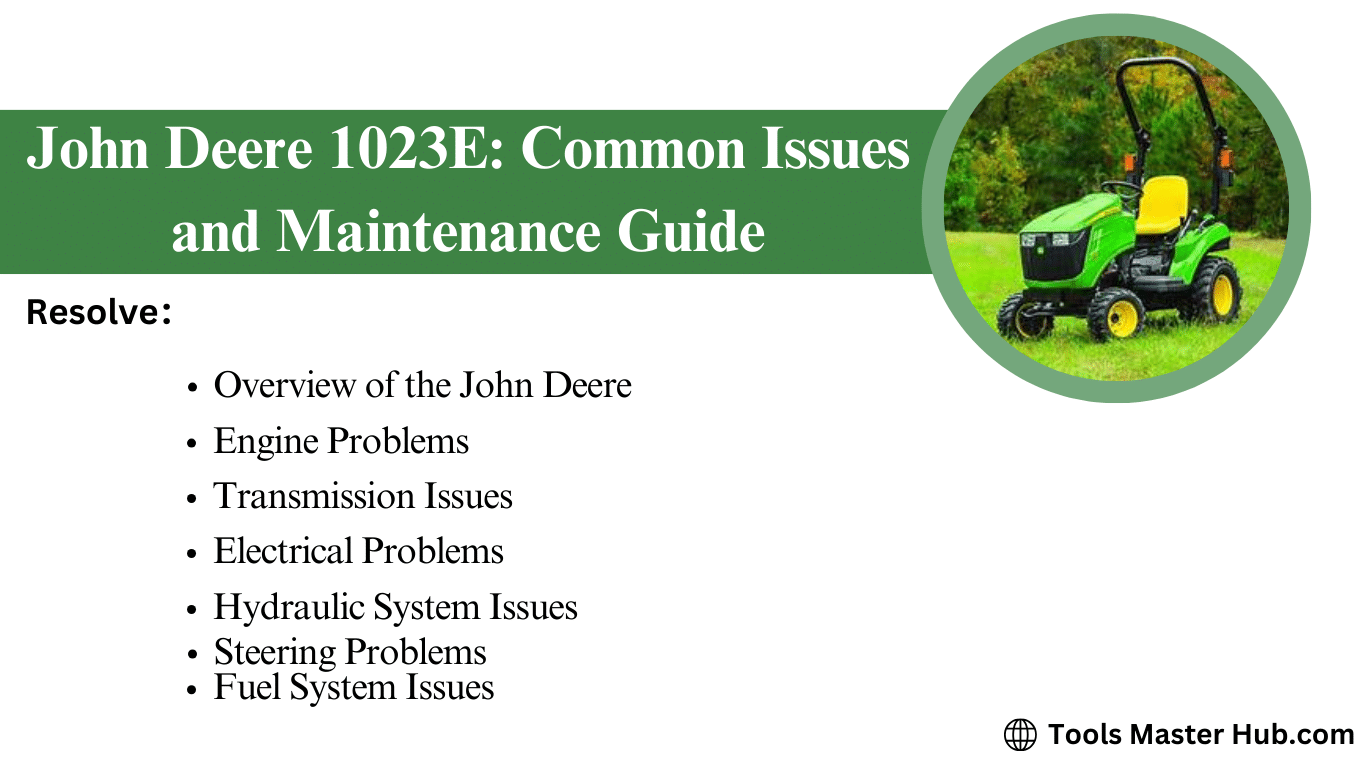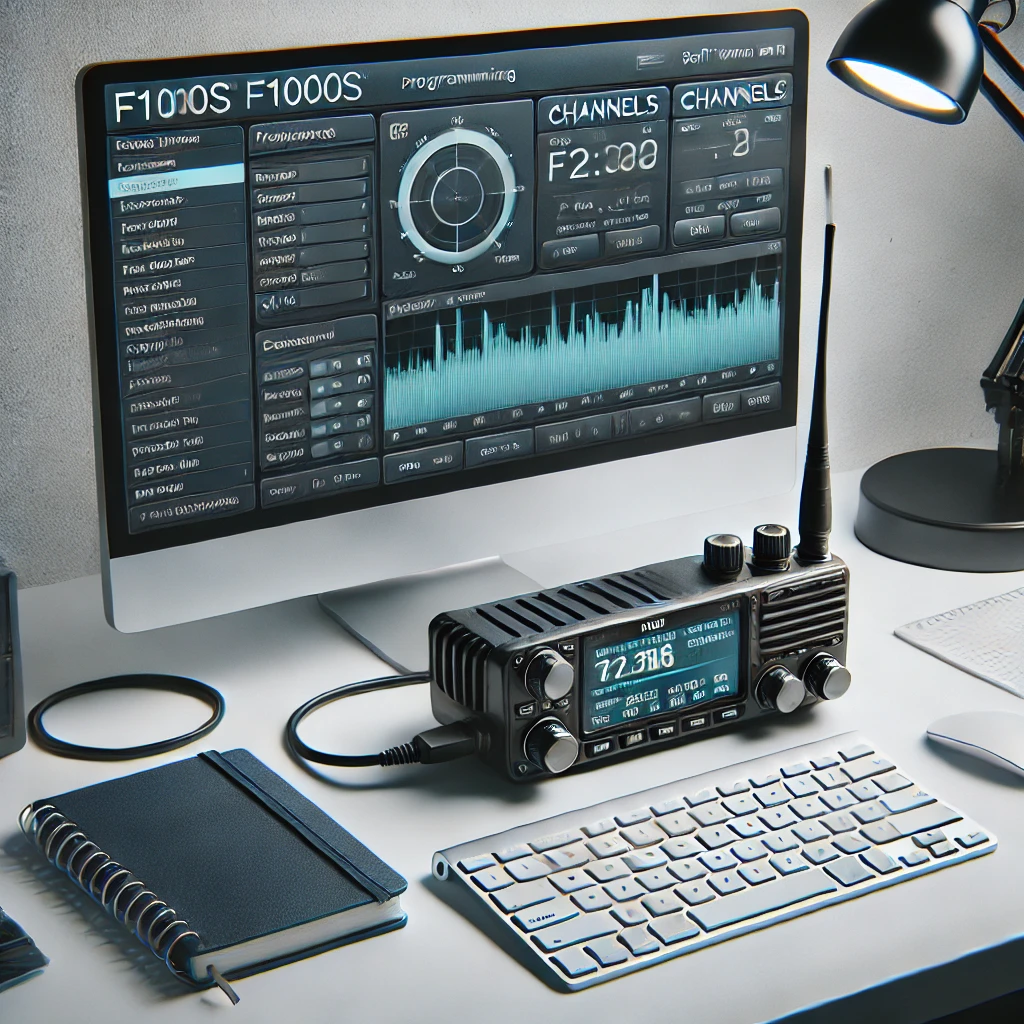Introduction
The John Deere 1023E tractor is a popular choice among small property owners and hobby farmers due to its versatility and efficiency. However, like any piece of machinery, it comes with its common issues that users should be aware of for proper maintenance and repair. Understanding these problems not only helps in timely troubleshooting but also prolongs the lifespan of the tractor. This blog post aims to provide a comprehensive guide to the most frequent problems faced by 1023E owners and how to address them effectively.
1. Engine Problems
A. Hard Starting
Symptoms: Owners of the John Deere 1023E may experience difficulty in starting the engine, often characterized by long cranking times.
Causes: The main reasons behind hard starting are fuel problems, battery troubles, or blocked air filters; poor quality fuel or dirt can disrupt proper burning; underpowered or defective batteries will fail at starting engines; an obstruction on an air filter reduces airflow necessary for igniting an engine.
Solution: Start by checking the quality of your fuel so that you ensure its freshness devoid of contaminates; next examine that battery terminal for corrosion clean it if needed lastly replace that filter or clean it thoroughly to ensure unrestricted air supply to your engine.
These steps can help resolve the hard starting issue, ensuring that your John Deere 1023E operates smoothly and efficiently
B Overheating
Symptoms: While using your John Deere 1023E you might note higher than normal temperature indicating overheating.
Causes: Low amounts of coolant, radiator covered with dirt, and blockage in thermostats usually result in overheated engines. When there is not enough coolant then heat from the engine cannot be carried away properly as required. When coolant flow inside the radiator is hindered the heat exchange process is troubled thus overheating occurs while a faulty thermostat hampers the circulation of coolants within the system.
Solutions: Begin by checking the coolant levels and top up accordingly. Use only the correct type of coolant as specified by John Deere. Also, check the radiator fins for any debris and clean them to allow proper airflow. Finally, if there is a fault with the thermostat replace it to ensure that your engine has a good supply of coolants.
Thus you can prevent overheating and make sure your John Deere 1023E remains reliable and efficient.
2. Transmission Issues
A.Slipping Transmission
Symptoms: The most common signs of slipping transmission in a John Deere 1023E include power loss and irregular speed.
Causes: Low transmission oil level or worn-out clutch are usually responsible for slipping transmissions; inadequate hydraulic pressure results from insufficient oil in transmission while tired clutches cannot pass engine power to wheels efficiently.
Solutions: Start by checking transmission fluid levels, topping off if necessary with the recommended quantity; use the correct type of oil according to John Deere’s specifications. Additionally, inspect the clutch for wear and tear replacing it when required so that power is transferred effectively.
B.Stuck in Gear
Symptoms: If shifting gears becomes difficult then your John Deere 1023E is stuck in gear.
Causes: Worn-out or broken gears and linkage problems are often behind the difficulty. The gear shifts are not as smooth due to damaged gears, while linkage might hamper the process of shifting gears properly.
Solutions: When you have a car stuck in gear, first check if there is any wear or tear on the gears and repair or replace them accordingly. Also, examine the gear linkage for misalignment or damage that may result in smooth gear changes.
By doing this you will be able to maintain your John Deere 1023E tractor’s performance and reliability.
3. Electrical Problems
A. Battery Drain
Symptoms: In the John Deere 1023E, it is common to have a battery that goes flat fast as a result of some electrical issues.
Causes: Parasitic drain and faulty alternator are two main causes of battery drain. Bad alternators never recharge batteries even when tractors run; also parasitic drains happen on gadgets taking energy off after turning off tractor keys.
Solutions: Start by testing the alternator to ensure it is working properly to solve battery drain problems. Replace if necessary. Additionally, inspect all electrical components to identify any parasitic drains that continue to draw power with the tractor off.
B. Lighting Issues
Symptoms: Dim lights or failure of lights being noticed are major electrical faults found with John Deere 1023E tractors.
Causes: They emanate from burnt bulbs or wiring defects mostly through time; bulbs tend to burn out eventually leading to fused wire connections which may cause light outages.
Solutions: First replace all dead bulbs in case of lighting problems for instance one installed on your JD model 1023E using appropriate specifications required for such lamps next analyze the wiring system specifically around loose connections thus refurbishing those sections for adequate lighting system again reign within farm scene back at normalcy status quo.
These electrical issues could be solved in order to maintain the safety and reliability of your John Deere 1023E tractor.
4. Hydraulic System Failures
A. Slow or Non-Responsive Hydraulics
Symptoms: Hydraulic tools not working at all or moving slower is a common observation among John Deere 1023E owners.
Causes: Low hydraulic fluid, plugged filters, and pump failure are the main reasons for slow or unresponsive hydraulics. Inadequate hydraulic fluid will not cause the required pressure; on the other hand, clogged filters limit fluid flow and a weak pump cannot move machinery to start operating it.
Solutions: Start by checking the hydraulic fluid level and refilling it if necessary. Use only genuine John Deere-specified hydraulic oil in your system. Replace the hydraulic filters to ensure that there is no interruption in the flow of fluids. To check its condition you should examine the hydraulic pump and replace it accordingly in case of finding any malfunctioning parts.
B. Leaking Hydraulics
Symptoms: In JD machines such as model 1023E, hydro-fluid is often lost through leakages.
Causes: Normally leaks are caused by damaged hoses as well as bad seals; this can happen over time due to wear and tear of hoses leading to sealing damage hence leading to leaking out of fluid contaminants.
Solutions: Commence by evaluating all these lines for signs of wear then change them where necessary, another step involves inspecting these seals worldwide and exchanging those that are worn out or damaged thus preventing future leaks from happening again
5. Steering Problems
A. Hard Steering
Symptoms: John Deere 1023E owners can experience hard steering, which is a situation where they find it difficult to turn the steering wheel.
Causes: Low power steering fluid or poor linkage are usually responsible for hard steering while low level of power assist fluid makes the hydraulic system inadequate to provide enough assistance for the operation of the vehicle in question, and poor steerage connection interferes with smooth movement.
Solutions: To cure the hard steering problem you need to check the level of power assist fluid and top up if necessary with the recommended fluid type. Therefore, inspect every component of your steerage system and replace any parts that show signs of wear or damage to restore normal steerage.
B. Wandering Steering
Symptoms: Another common problem with the John Deere 1023E tractor’s steering is wandering steering whereby the tractor moves off course unexpectedly.
Causes: Worn-out time (steering) components often cause wandering steering since worn-out parts will affect the proper movement of a tractor along a straight line while the wrong setting (alignment) may lead to unstable directionality.
Solutions: Replace old damaged parts by fitting new ones when fixing wandering steering. Then put right (realignment) maladjusted steerage systems in place which allows running on a straight path per driving instructions in that particular case.
This will enhance your John Deere 1023E tractor’s maneuverability and safety leading to its efficiency even under different working conditions as well as prolonged service life.
6. Fuel System Issues
A. Fuel Starvation
Symptoms: Sputtering or stalling engine indicates that there might be fuel starvation in John Deere 1023E tractors.
Causes: Obstruction within fuel filters or the presence of air bubbles inside fuel pipe often leads into cases of fuel starvation; these make it harder for amount needed for combustion processes to be supplied by the system.
Solutions: Replace the fuel filters at regular intervals as recommended by John Deere. In addition, ensure that there is no air in the fuel line by bleeding (removing) it from the whole fuel system so that the engine receives normal amounts of this substance from time to time.
B. Fuel Leaks
Symptoms: Additionally, these tractors may demonstrate some signs of visible leakages as well as they significantly produce fuels smells.
Causes: Damaged pipes or a ruined consumer pump are some of the factors responsible for leaking fuel. On the other hand, cracked or worn-out lines and defective seals on a malfunctioning pump usually result into leakage of fluid from such an apparatus.
Solutions: Inspect all fuel lines for damage and replace any that are damaged. The best solution is therefore to buy another one because if you continue using it more gasoline will be wasted and its normal operation will not be assured so long as no air bubbles go through it.
Miscellaneous Issues
A. Excessive Vibration
Symptoms; Operators might experience strange vibrations while using John Deere 1023E.
Causes: Excessive vibration may also arise due to unbalanced wheels or free components within the tractor’s body.
Solutions: Thus, one needs to constantly balance tires to stop excessive shaking which leads in many cases toward unsteady driving conditions under prolonged use; also he should examine loose parts, tighten them up, or put news instead thus lessening chances for getting unnecessary noise during field works with these machines.
B. PTO Problems
Symptoms: Difficulties experienced when engaging / disengaging PTOs may indicate PTO problems.
Causes: Worn-out PTO clutch was recognized as being attributable to those involved in PTO engagement management linkage problems.
Solutions: If the PTO clutch is worn out, renew it or you may turn to a PTO linkage which needs to be adjusted to smoothen the engagement and disengagement processes.
This complete solution will enhance how your John Deere 1023E tractor performs overall and lasts longer when it comes to working in different agricultural and landscaping jobs.
Conclusion
In conclusion, while John Deere 1023E tractors are known for their reliability and versatility, they have several common problems that can be prevented with proper maintenance for durability.
Summary of Common Issues and Their Solutions: Ranging from engine issues such as hard starts and overheating to gearbox troubles like slipping and being stuck in gear, the 1023E faces many challenges. Also, other concerns include electrical problems like battery drain and lighting issues; hydraulic system failures as well as steering ones. For each problem, there is a requirement of prompt attention whether it is refilling fluids, parts replacement or adjustment.
Importance of Regular Maintenance: Avoiding these problems or making them worse through preventive maintenance. Checking fluid levels, filter inspections, and routine inspections can help you spot early issues that could affect performance.
Encouragement to Seek Professional Help: In case of complicated issues beyond your expertise should seek professional assistance. This will guarantee good diagnosis by certified technicians who have all the necessary tools for repairs leading to the most productive state of the machine.
Call to Action
Submit your tips for maintaining a tractor below. Our community of tractor owners will benefit from any insight you provide on this matter.
Contact Information: For additional support or professional repair services please contact [Insert Contact Information].
Subscribe for More Tips: Don’t miss out on valuable tips and advice on tractor maintenance. Subscribe now by logging into our blog so that you won’t miss out on the latest news trends as well as best practices ever.- Make sure that you are proactive about getting regular tune ups done but also if something goes wrong make sure to take it to a professional.
FAQs
How much weight can a 1023E pull?
The John Deere 1023E is modest in size and power, but it can tow moderate loads. Towing specifications are available on the tractor’s manual or consult a John Deere dealer for more information.
How much horsepower is a John Deere 1023E?
John Deere 1023E tractor comes with a twenty-three point nine horsepower (HP) engine.
Is the 1023E a good tractor?
The John Deere 1023E is an excellent small property owner and hobby farmers’ tractor because of its reliability, versatility, and ease of operation. The machine can be utilized for tasks such as mowing, gardening, and light agriculture among others.- If you perform regular tune-ups you most likely will not run into many problems however if something does go wrong make sure you get it looked at by a professional right away.
What should I do if my John Deere 1023E has steering problems?
A low level of power steering fluid, worn-out parts, and misaligned components could result in stiff steering or wandering. Refill and monitor the level of power steering fluid regularly while inspecting the steering linkage for wear or damage done to it.
How can I prevent my John Deere 1023E from overheating?
Regularly check coolant levels; clean radiator fins frequently; replace thermostat if necessary. Regular maintenance of the cooling system helps prevent overheating.
What should I do if my John Deere 1023E tractor’s transmission seems to be slipping?
Slipping transmission may arise from low transmission fluid or a worn clutch. Check the transmission fluid level fill it up, and examine the clutch for any sign of wearing out. Substituting components as necessary will bring back the proper working of a gearbox.











Leave a Reply